Last week I got the chance to tour a waste to energy plant. The plant receives non-hazardous, household garbage from municipalities, consumer businesses, government agencies, and international ports. It burns the waste and converts the energy given off during the burning to electricity, which is then put into the power grid. Some of the waste that comes from government agencies need secure destruction, and at the plant, the waste is put directly into the feed stream and burned, so as to allow the needed secure destruction. The waste from international ports, such as nearby airports, must be burned to prevent any pathogens entering the country that may affect agriculture, and so it also is fed directly to the feed stream. Interestingly, the municipalities that send waste to the plant discourage their residents from putting yard waste into the trash. Besides being environmentally unfriendly because yard waste can be composted and nutrients returned to the earth, the yard waste is also not good for the waste to energy process because it produces nitrogen oxides (NOx), which forces the plant to put in more pollution control.
There are 88 waste to energy plants in the US, and 45-46 are Covanta’s, the owner and operator of this plant that I toured. The plant receives about 1000 tons garbage/day and after burning it, produces about 300 tons ash/day, which is 10-15% fly ash and the rest bottom ash. Thus, the plant achieves about a 70% weight reduction and also a 90% volume reduction. The fly ash is sent to monofill, which is like a landfill but only accepts fly ash. Fly ash can be used in making concrete, so evidently there is currently research being done by both the concrete industry and various waste to energy plants as to if this fly ash can be used for concrete and thus also be reused.
With the exception of the trash that has to go directly into the feed, when it first comes to the plant, the trash is placed on floor where humans look at trash to remove anything that should not be going into the boiler. For example, inert material shouldn’t go into the boiler because not only does it not burn, it is also a heat sink and reduces the efficiency of the process. The trash is then put into a storage pile to be eventually fed into the boiler feed. A large claw moves the trash to piles, mixes the piles, and then moves trash from the piles into the boiler feed.
The trash is sent to one of three boilers, each of which has six cells. The boilers burn the trash at 1800-2000°F (1300K). The boilers are initially heated up with diesel fuel, but then the trash sustains the burn. However everyday diesel fuel is used to test the burn.
The heat from the boilers is used to heat water to turn it into steam. The water is in a closed loop system, but they use about 20-25,000 gallons of water per day due to loss. [They use another 200,000 gallons/day for the cooling tower and are exploring with the nearby wastewater treatment plant using treated wastewater for this.] The water goes through a reverse osmosis treatment for purity, so nothing damages the turbines and the rest of the system. The produced steam is superheated but drops to 700°F before entering the turbines. There are two turbines with 14 stages. The steam turns the turbines, and that motion is converted into electricity in the generator. They produce 14.5 MW per turbine. Because of the work the steam does on the turbine, the steam enters the turbine at 600 psi and leaves in vacuum in a 10 ft length.
All the gases that leave the boiler pass through a series of air pollution control units. Ammonia, lime slurry, and carbon are used for pollution control. There are probes in the system to sample flue gas for pollution control additives that are needed. The treated gas then goes to a baghouse where particulates are captured. The air is below 300°F before going into baghouse, so it has cooled quite a bit.
The ash from the boiler is sent through a unit to remove all metals. The ferrous metals (attracted to magnets) are separated from the rest of the metals, and all the metals are sold for scrap.
The whole process is monitored in a control room by one or two people. I was amazed at how simple the process was. I, the environmental engineer, was of course geeking out at the whole thing, but it was a really cool process and efficiently run.
Finally here is a very short video of a few scenes from the plant. This includes waste being loaded into the feed, the fire in the boiler, and bottom ash entering the metals separator.

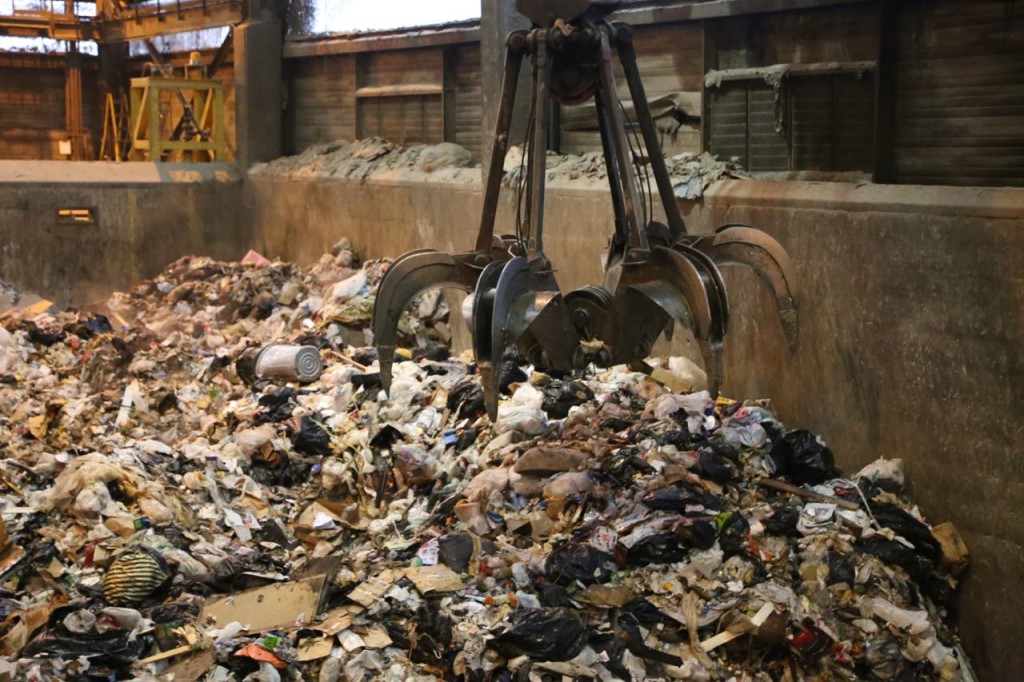
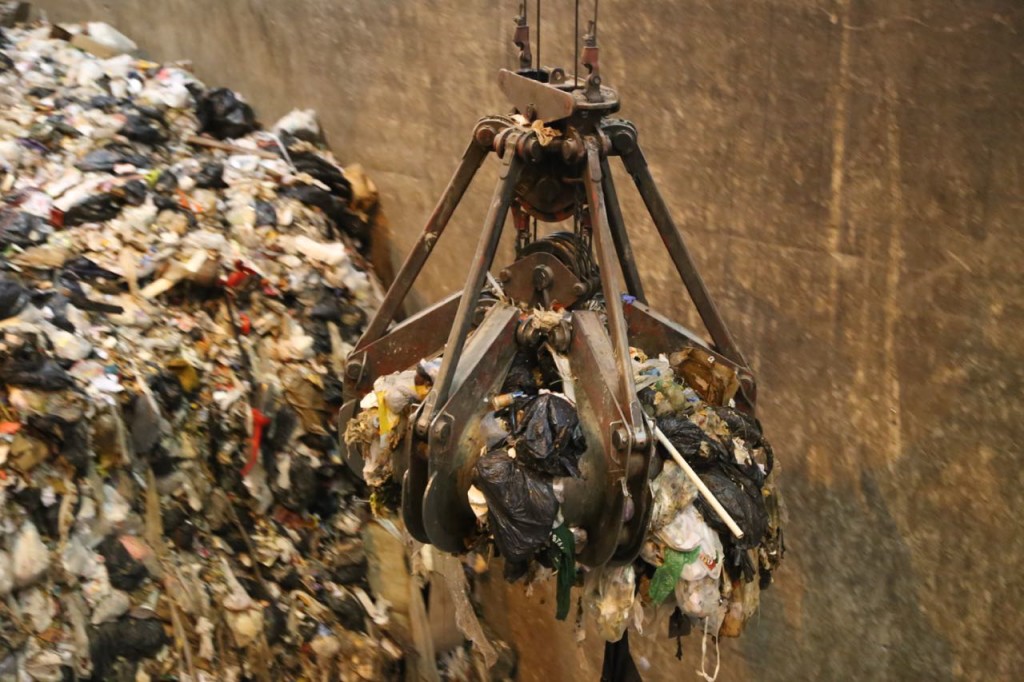
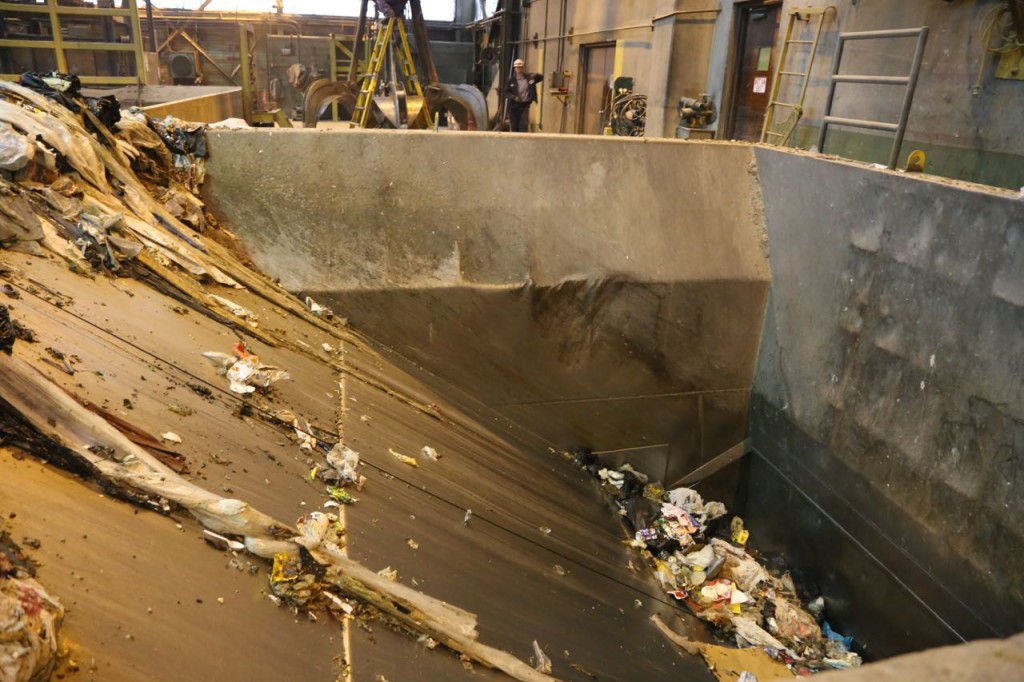
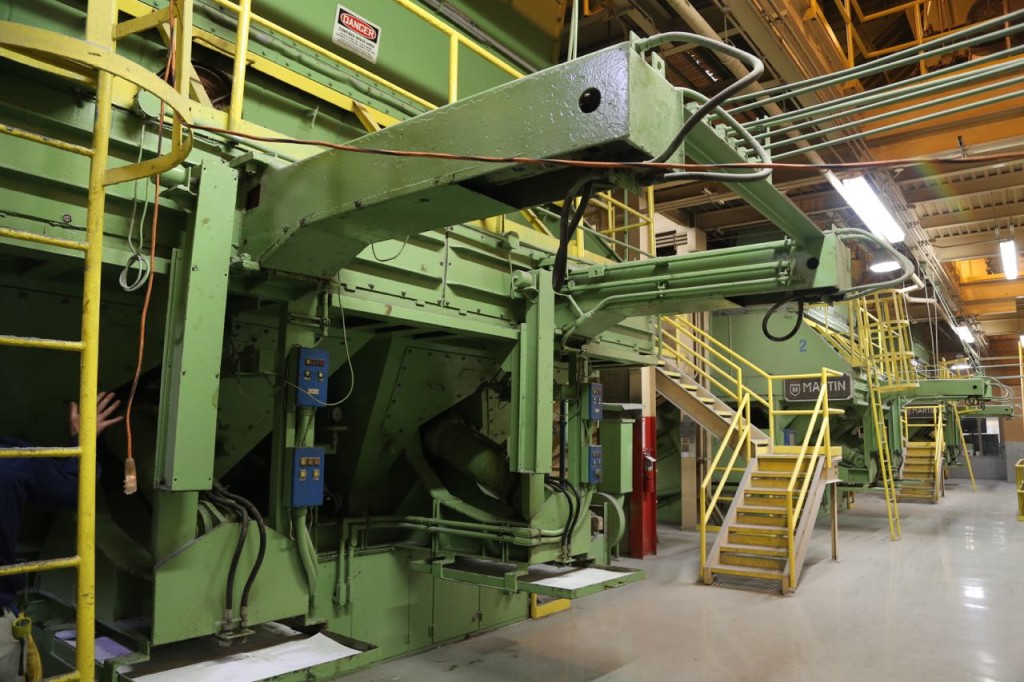
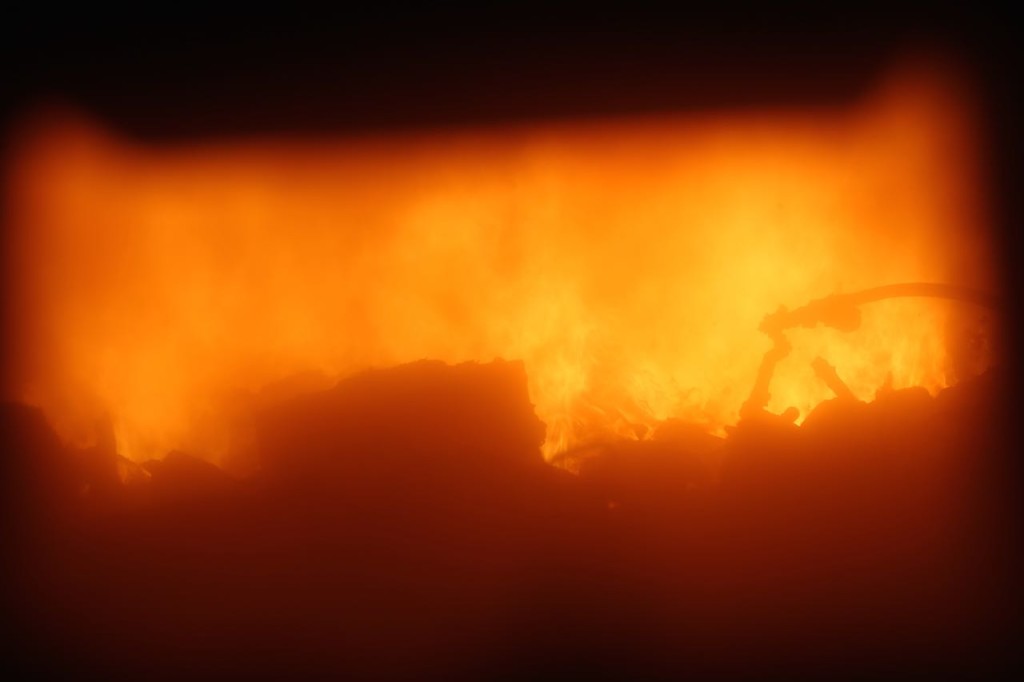
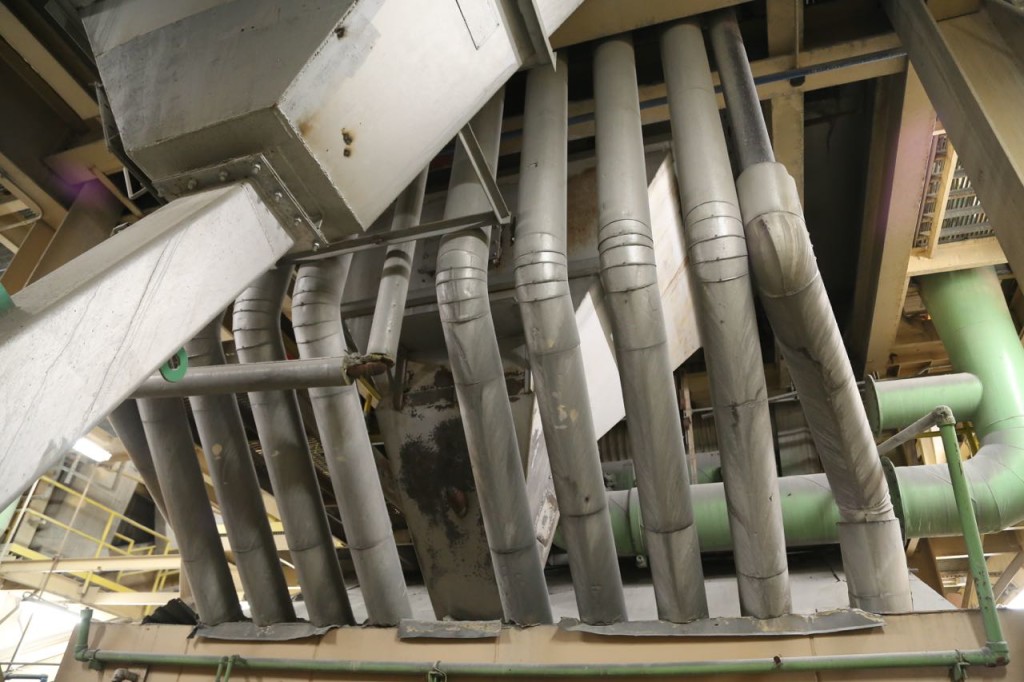

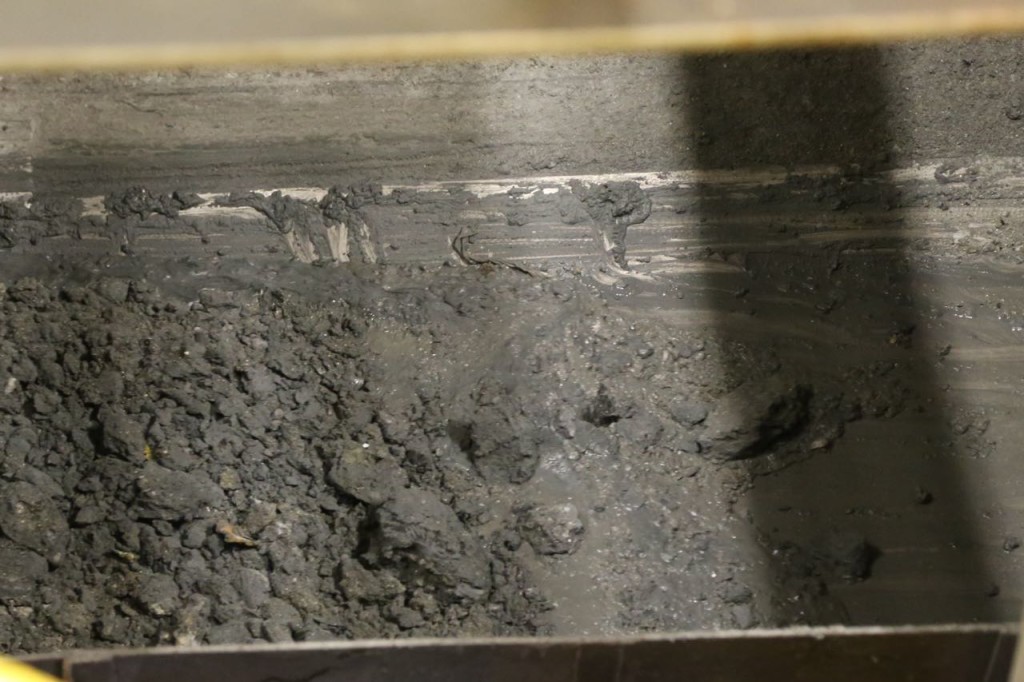
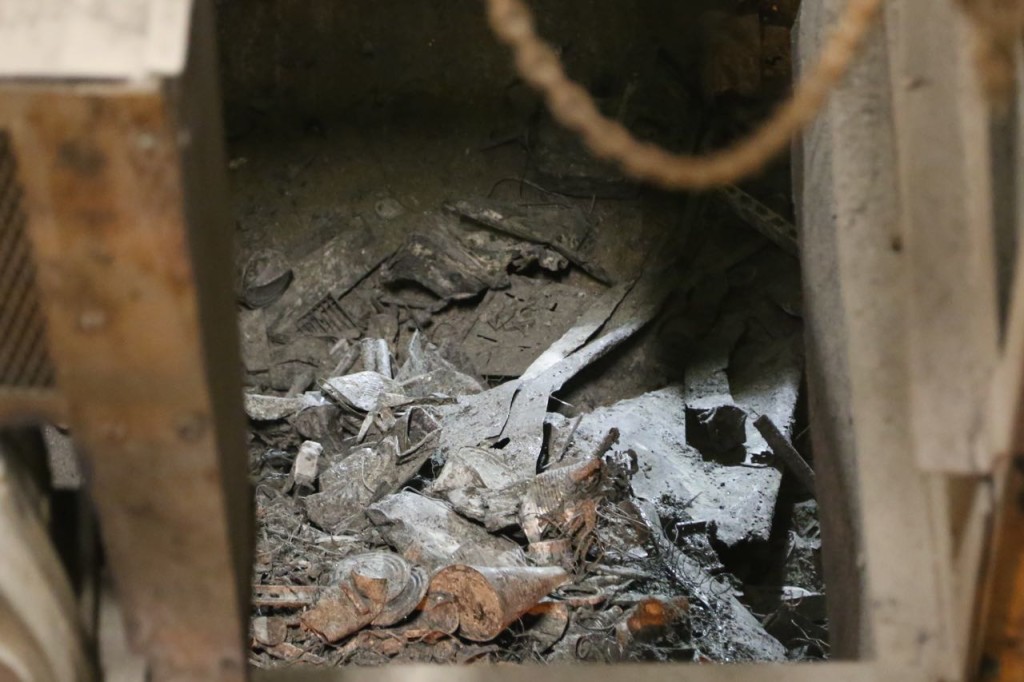
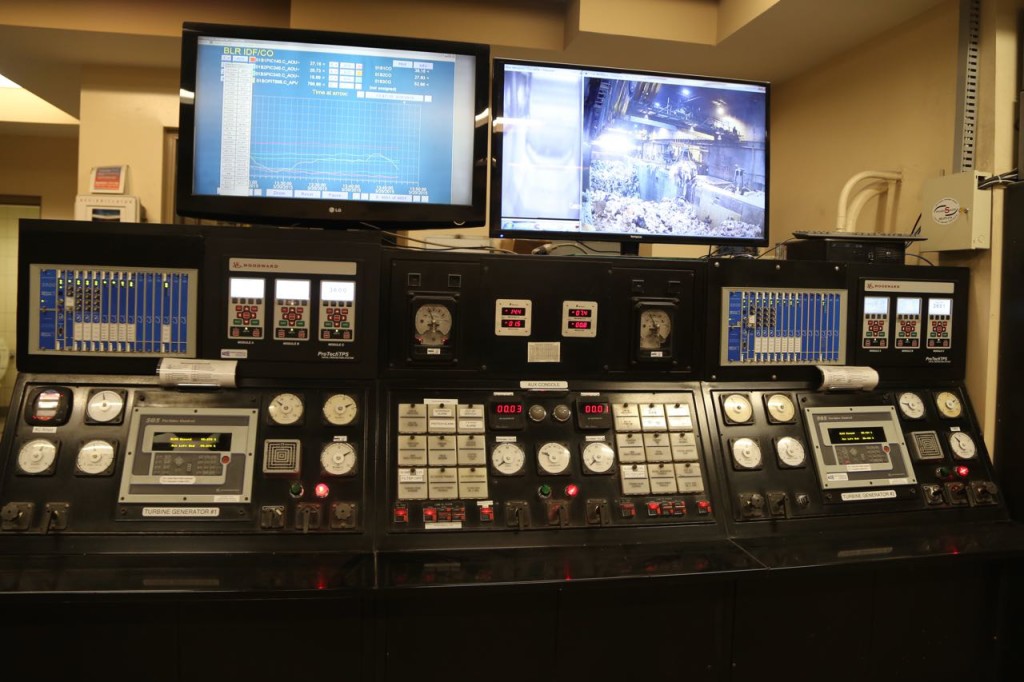
“Some of the waste that comes from government agencies need secure destruction.”
Love this. (There’s a good passage at the end of one of James Bamford’s book about the NSA that talks about one of these plants.)
He specifically mentioned FBI and DHS. Considering this is in the DC area, I can only guess that there might be others, possibly including NSA. What these boilers must burn. . .
Pingback: Marine Waste Transfer Station | Geeky Girl Engineer